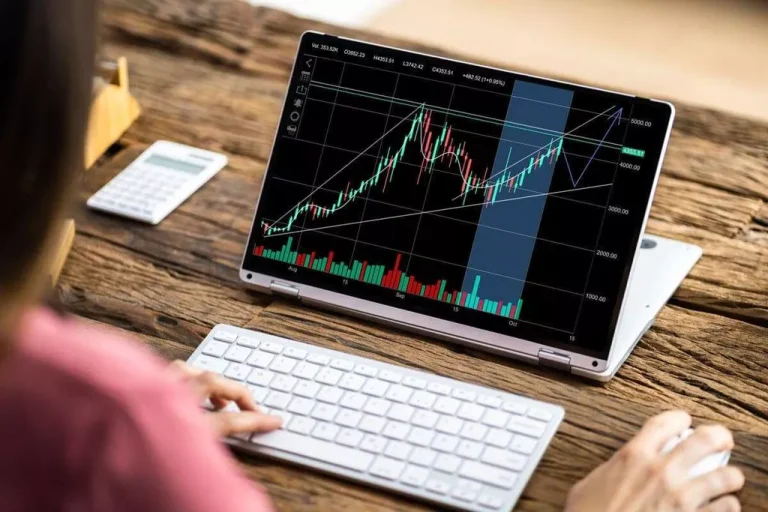Content
In the B-Book model, the broker acts as a forex market maker and serves as the counterparty in a trade that a client makes. This may lead to a conflict because the broker stands to gain financially from clients’ losses. The choice between A-Book and B-Book brokers significantly affects how you trade. A-Book brokers offer transparent prices and fair execution, benefiting from the volume of your successful trades. On the flip side, B-Book brokers might profit from most traders’ failures, compromising transparency. Although they might offer faster transactions and appealing prices, this comes with a https://www.xcritical.com/ cost to reliability and openness.
- Your technology infrastructure is also important, while setting up your hybrid Forex brokerage assess the technological capacity to handle both models efficiently.
- Another problem is that the quality of the services offered by liquidity providers is deteriorating over time.
- I would recommend trying both models and choosing the one most suitable for your trading style and trading system.
- The challenge lies in correctly identifying losing and winning traders.
- To provide clients with deep liquidity and tight spreads, brokers may connect several liquidity providers and use smart liquidity aggregation with Brokeree’s Liquidity Bridge.
Understanding Forex Brokerage Models
If you want to learn about back-office basics and how it works, you can check it out here. If you’re interested in taking advantage of facilities like CRM solutions, MAM and PAMM programs, Affiliate Programs, and Copy Trading platforms, speak to a consultant at our site and try UpTrader today. Selecting the right what is a book vs b book Forex software requires a clear understanding of your business needs and goals. Artificial intelligence is revolutionizing trading strategies, from predictive analytics to automated decision-making.
Marketing and Client Acquisition

Learn the basics of a cash flow statement and how they can provide valuable insights into a business’s financial health. The material covered and the resources offered are for educational purposes only. Always do your own research and only execute trades based on your own personal judgement. But now that Global Prime is fully integrated with TradingView the same as Oanda is, and I’ve grown as a trader to the point where I can trade in lot sizes without it affecting my risk too much, I feel comfortable making the move. Financial cryptography The main reason I kept using Oanda for so long is because their platform is fully integrated with TradingView, and they allow me to trade in any position size (units instead of lots).

A-Book vs B-Book: Execution Process
The broker needs to sign agreements with a liquidity provider (or with several of them), obtain licenses, provide technical support to bring client orders to the external market. Accordingly, the A-Book broker is forced to increase the mark-up to the spread to justify its costs. Brokers considered to be of higher quality in the Forex trading industry, such as Pepperstone and IC Markets, often favour the A-Book model.
In the fast-paced world of Forex trading, precision, speed, and clarity are not just desirable — they’re essential. Forex broker software is probably the most significant tool that any brokerage can have to keep itself competitive and efficient while delivering an exceptional trading experience. In finance, the most powerful tool is information — and in Forex, the software is your lens to see it clearly. That is what Prop Firm Solutions has brought with integrated risk management features. There are two types of broker operating technologies – A-Book and B-Book models, which differ in the way client orders are brought to the market. If a broker chooses to accept the market risk, when the trade is executed, it is called “B-Book execution”.
As a result, the A-Book broker is compelled to raise the mark-up on the spread in order to cover its overhead expenses. Therefore, our A-book broker would make a profit of USD 700 (100 lots traded times USD 7). However, in reality, they need to pay fees to their liquidity providers (LPs), which would reduce their actual profit per lot traded. With that in mind, it’s important to consider the economic feasibility of running a pure A-book brokerage.

Reputation is key in the highly competitive forex market, and brokers who fail to establish trust may struggle to maintain a strong client base. The success and integrity of this model significantly rely on the sophistication and fairness of the broker’s software and their commitment to providing a balanced trading ecosystem. A-Book brokers generate income primarily through commissions charged on each trade executed by their clients. This commission is a fixed fee per trade or a percentage of the trade volume. Additionally, they may earn by slightly increasing the spread, which is the difference between the buy (ask) and sell (bid) prices of a currency pair. When a broker uses the A-Book business model, all of its clients’ orders are transmitted directly to the forex liquidity provider, who in turn routes them to the interbank market.
The A-book model provides more transparency for the broker, as it directly facilitates the trade. A robust risk management framework is crucial for a hybrid model. Set appropriate margin levels to protect your broker from client losses. Also, educate and encourage your clients to use risk management tools such as stop-loss and take-profit orders. Carry out regular stress testing to assess your brokerage’s resilience to market shocks, and maintain sufficient capital to cover potential losses.
The trader sees prices and volumes of orders, which suggest a kind of market sentiment. The Depth of Market of level 1 displays the data on the best prices. The Depth of Market of level 2 provides complete information on all orders placed. Therefore, the broker is forced to use software to track such tricks of the provider. A B-Book broker prefers that those profits are passed around more evenly among its customer base since it allows them to continue pocketing the spread from a larger pool of traders.
Many major Forex brokers use a hybrid methodology that involves entering transactions into either the A-Book or B-Book based on trader characteristics. This allows these brokers to better manage their risk while still providing their clients with access to the market. As for prohibiting inducements – this just means that brokers can no longer incentivize traders to trade more actively through offering prizes and gifts. Any broker that encourages you to take undue risk by trading larger or more frequently than you normally would is almost certainly a B-book broker who is profiting from your losses. Commission is one of the broker’s sources of income in the A-book model. Even though the prices of entry and exit were the same for the broker and their client, the client pays commissions to the broker for the execution.
Logically speaking, it would be good to trade with brokers that are ‘on your side’ isn’t it? This means they don’t play tricks on you, such as slippages, requotes, or delay your trade execution times. These Forex trading brokers have built their reputation on providing a trading environment that aligns with the best interests of their clients, which is a key factor in their perceived quality.
Since brokers act as the counterparty to clients’ trades, there may be a perception of a conflict of interest, as the broker’s profit may come from clients’ losses. To address this concern, reputable brokers using the B-Book model should prioritize fair and transparent practices and adhere to strict regulatory standards. By handling trades within their own system, B-Book brokers can offer competitive spreads and fast order execution. This is particularly beneficial during periods of high market volatility when quick trade execution is critical. The ability to fill orders instantly without waiting for external confirmations allows B-Book brokers to create a smoother trading experience for their clients.
This approach helps brokers manage risk more effectively and cater to a broader range of client needs. The profit margin of an A-Book forex broker is lower statistically, but it is more steady. In the forex market, it is widely known that percent of traders lose their initial investment within six months, which works to the advantage of the forex B-book broker.


